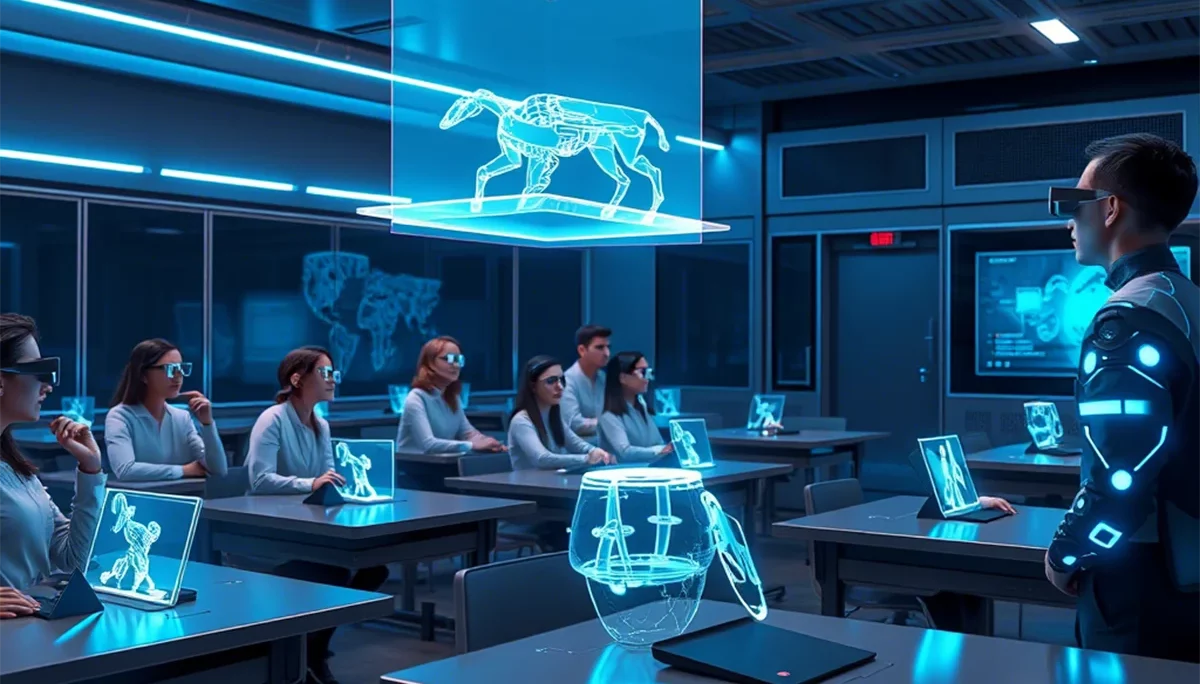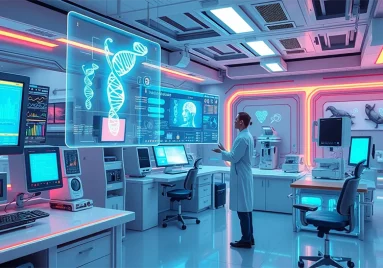Artificial intelligence (AI) is revolutionizing many aspects of our lives, and education is no exception. From personalized learning experiences to automated grading, AI-powered learning tools are reshaping the way students learn and teachers educate. But what exactly does AI bring to the classroom, and how does it enhance the learning process? Let’s dive in and explore the impact of AI in education.
The Role of AI in Education
AI is transforming education by making learning more personalized, efficient, and accessible. With intelligent algorithms and machine learning, AI can analyze student behavior, predict learning patterns, and provide tailored resources. This not only helps students grasp concepts at their own pace but also allows educators to focus on teaching rather than administrative tasks.
Benefits of AI in Education
- Personalized learning experiences – AI adapts content based on students’ progress.
- Enhanced engagement – AI-driven tools make learning more interactive and fun.
- Efficient administration – AI automates grading, scheduling, and reporting.
AI-Powered Learning Tools
Intelligent Tutoring Systems
AI tutors provide step-by-step guidance and personalized feedback. These systems can detect where students struggle and adjust lessons accordingly. Examples include platforms like Carnegie Learning and Squirrel AI.
Adaptive Learning Platforms
AI-powered adaptive learning platforms adjust content in real time based on student performance. They track progress and suggest exercises tailored to individual needs. Notable platforms include Knewton and Smart Sparrow.
Automated Grading and Feedback Systems
AI can evaluate assignments, quizzes, and even essays within seconds. Tools like Gradescope and Turnitin help educators save time while providing detailed feedback to students.
AI Chatbots in Education
AI chatbots assist students by answering questions, explaining concepts, and even helping with homework. These bots are available 24/7, offering instant support.
AI for Special Education
AI helps students with disabilities by providing speech-to-text services, personalized learning materials, and virtual assistants. Microsoft’s Seeing AI and Google’s Lookout are great examples.
AI-Powered Virtual Labs and Simulations
Virtual labs powered by AI allow students to conduct experiments in a digital environment, making science and engineering subjects more accessible. Simulations help learners grasp complex concepts through interactive experiences.
The Benefits of AI in Learning
Personalized Learning Paths
AI customizes educational content to match each student’s pace, strengths, and weaknesses. Instead of a one-size-fits-all approach, AI enables a unique learning journey for every student.
Increased Engagement and Motivation
AI-powered gamification techniques make learning more enjoyable. With interactive quizzes, virtual rewards, and real-time feedback, students stay motivated.
Time-Saving for Educators
Teachers spend less time on administrative tasks like grading and lesson planning. AI-powered tools handle repetitive tasks, allowing educators to focus on student interaction and creative teaching strategies.
Challenges and Concerns of AI in Education
Data Privacy and Security Risks
AI systems collect vast amounts of student data, raising concerns about privacy and security. Schools must implement strict policies to protect sensitive information.
Dependence on Technology
Over-reliance on AI may reduce students’ critical thinking and problem-solving skills. A balance between AI assistance and traditional learning methods is crucial.
Future of AI in Education
The future of AI in education looks promising. We can expect even more sophisticated AI tutors, immersive virtual classrooms, and advanced predictive analytics to help students succeed. AI will continue to bridge educational gaps, making learning more accessible worldwide.
Conclusion
AI-powered learning tools are revolutionizing education by making it more personalized, engaging, and efficient. From intelligent tutoring systems to AI chatbots, these technologies are shaping the future of learning. While there are challenges, the benefits far outweigh the drawbacks, paving the way for a smarter educational system.
FAQs
1. What are AI-powered learning tools?
AI-powered learning tools use artificial intelligence to personalize, automate, and enhance the educational experience. Examples include intelligent tutoring systems, adaptive learning platforms, and AI chatbots.
2. How does AI personalize education?
AI analyzes student performance and learning styles to adjust lessons, recommend resources, and provide real-time feedback. This ensures that each student receives a customized learning experience.
3. Can AI replace teachers in the future?
AI cannot replace teachers, but it can assist them by automating tasks and providing additional support. The human touch in education remains essential for creativity, mentorship, and emotional support.
4. What are the risks of using AI in education?
Some risks include data privacy concerns, over-dependence on technology, and potential biases in AI algorithms. However, with proper regulation and ethical AI development, these risks can be managed.
5. How can AI help students with disabilities?
AI can assist students with disabilities through speech recognition, text-to-speech, personalized learning apps, and virtual assistants. These tools make education more inclusive and accessible.
Please don’t forget to leave a review.






